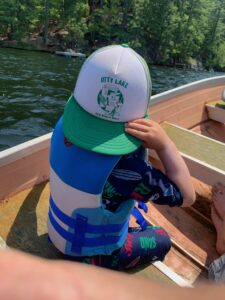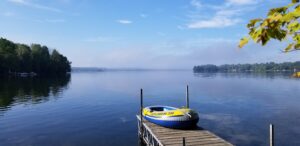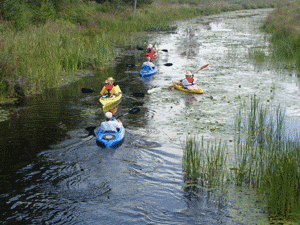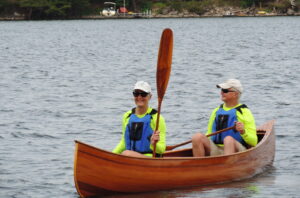Otty Lake Boating
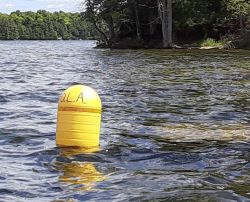 Shoal Marking Program
Shoal Marking Program
A new shoal marking program began in 2022. Thirteen “high priority” shoals on Otty Lake have been marked with Transport Canada approved buoys and in accordance with Transport Canada guidelines. Installation will start on the Victoria Day Weekend, and they will be removed at the end of the season. A number of residents have volunteered to “adopt” a shoal: install the buoy on “their” shoal in the Spring, remove it in the Fall, and monitor it on a periodic basis. Email [email protected] for more details or if you’d like to help.
Give a wide berth to these markers. Not all shoals are marked and the hazard of these shoals vary, corresponding with the fluctuations of water level during the boating season. Boaters should practice caution when navigating about the lake and become familiar themselves with the shoals and shallow areas, whether or not they are marked.
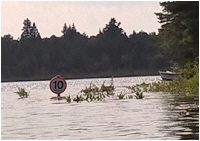 Shoreline Speed Limits
Shoreline Speed Limits
Some provinces have adopted speed limits of 10 km/h within 30 m (98’5”) of shore on all waters within their boundaries. This speed limit applies in Ontario, Manitoba, Saskatchewan, Alberta and the inland waters of British Columbia and Nova Scotia. This limit is in effect whether it is posted or not. Exceptions include:
recreational towing where the boat follows a path at a 90 degree angle to the shore in an area designated by buoys for recreational towing;
rivers less than 100 m (328’) wide, as well as canals and buoyed channels; and
waters where another speed limit is set in a schedule to the regulations.
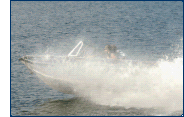 From Transport Canada:
From Transport Canada:
You may have to stop or turn suddenly to avoid a collision, so operate at a safe speed. When choosing a safe speed consider:
The visibility conditions (fog, mist, rain and darkness) and your ability to see ahead
The wind, water conditions and currents
The maneuverability of your boat
The traffic density, types of vessels in the area and their proximity
The proximity of any navigational hazards (rocks, and tree stumps)
Be especially careful when operating in areas of restricted visibility, such as entering or exiting a fog bank.
Consider the effects your boat’s wake might create while choosing your speed. Your boat’s wake can damage other vessels, docks and the shoreline.
Also, consider other users of the waterway such as swimmers, divers and people aboard small vessels that your wake could cause to capsize. You could be held liable for these damages.
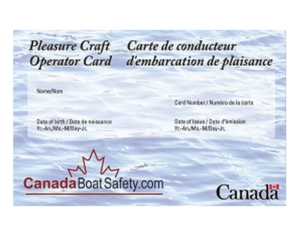 Pleasure Craft Operator Cards
Pleasure Craft Operator Cards
Effective Sept. 15, 2009, everyone who operates a power-driven boat in Canada needs proof of competency that shows they understand the rules of the water and how to safely operate a boat. There is no age exemption.
The most common proof of competency is the Pleasure Craft Operator Card, which you get obtain after passing an accredited boating safety test. If you completed a boating safety course before April 1, 1999 you are covered. You do not have to take a course in order to take the boater exam, but it is highly recommended. Once you get your Pleasure Craft Operator Card, it’s good for life with no annual fees. Keep it with you when you are out on the water. Read about it.
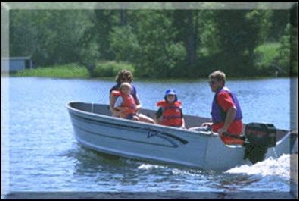 Other Proofs of Competency. There are other ways to prove competency: via a specified marine certificate, a completed rental boat safety agreement, or an equivalent from another state or country. If you are a foreign resident, check the regulations. You may be exempt for a visit less than 45 consecutive days.
Other Proofs of Competency. There are other ways to prove competency: via a specified marine certificate, a completed rental boat safety agreement, or an equivalent from another state or country. If you are a foreign resident, check the regulations. You may be exempt for a visit less than 45 consecutive days.
Non-Powered Pleasure Craft. The Proof of Competency does not apply to non-powered pleasure craft, such as canoes, kayaks, rowboats or sailboats, unless the boat has a motor, even if it is turned off.
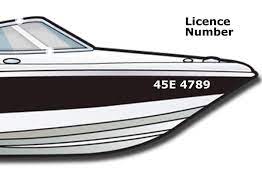 Pleasure Craft Licences
Pleasure Craft Licences
The law requires all pleasure craft powered by 10 horsepower (7.5 kW) or more engine, to have a pleasure craft licence, unless they have a Vessel Registration. The Pleasure Craft Licence is a unique licence number that must be displayed on your boat. The number allows Search and Rescue personnel to access important information in an emergency. The licenses are free and are valid for 10 years. Read the regulations.
Other Useful Information
Alcohol
Boating while alcohol-impaired is an offence under the Criminal Code of Canada. You may not consume alcohol in a pleasure craft unless in it secured alongside a dock, or it has permanent sleeping, cooking or toilet facilities.
Shore-Line Speed Restrictions
In Ontario the unposted speed limit is 10km/h (6 mph) within 30 meters (100 ft) from shore. This limit applies except where other limits are posted. There are exceptions in rivers, canals and buoyed channels, and for water skiing.
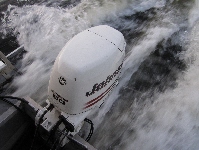 Age – Horsepower Restrictions
Age – Horsepower Restrictions
The following excerpt is from the Transport Canada website.
The Age – Horsepower Restrictions prohibit operators under the age of 16 from operating recreational vessels above specified horsepower limits:
Children under the age of 12 and not directly supervised by someone 16 years of age or older can operate a recreational vessel with no more than 10 hp (7.5 KW).
Youth between 12 years of age and under 16 years of age and not directly supervised by someone 16 years of age or older can operate a recreational vessel with no more than 40 hp (30 KW).
Only persons 16 years of age or older can operate a personal watercraft (PWC)
Read more on alcohol, speed, horsepower restrictions and other other boating issues.
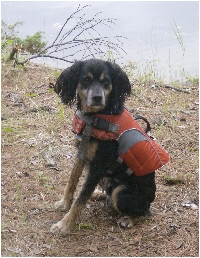 Life Jackets and PFDs (Personal Flotation Devices)
Life Jackets and PFDs (Personal Flotation Devices)
Recreational boats (“Pleasure Craft”) must have “one Canadian approved personal flotation device or lifejacket of appropriate size for each person on board” . While regulated by Transport Canada, these rules may be enforced by provincial authorities. Enforcement and safety organizations all recommend that life jackets be worn. For more discussion, see Wear a Life Jacket website.
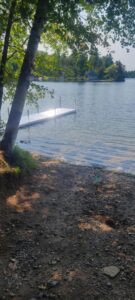 Boat Launch
Boat Launch
There is one public boat launch on Otty Lake, operated by Tay Valley Township. It is located on Miller Road off of the Elmgrove Road (County Road 21), on the southeast shore of the lake. Parking is limited. In 2022 a dock was added. In 2023 an outhouse and sign kiosk will be added.
Boating Safety Resources
Life Jackets and PFDs – Transport Canada
Towing Humans
- A video by a Muskoka resident, Scott Ferguson, and the Muskoka Lakes Association on the safe towing of people (tubing, wake-boarding, water skiing etc.) See video. Approx. 10 minutes.
Reporting Unsafe or Dangerous
Boating Practices
Call OPP 1 888 310 1122
Be prepared to leave a message & give detailed information:
- Your name & contact information.
- Location of incident & where was the boat headed.
- Description of boat or personal watercraft
- Colour(s), make, boat number (side or rear), boat name, type, other markings. How many people on boat?
- Description of incident.
